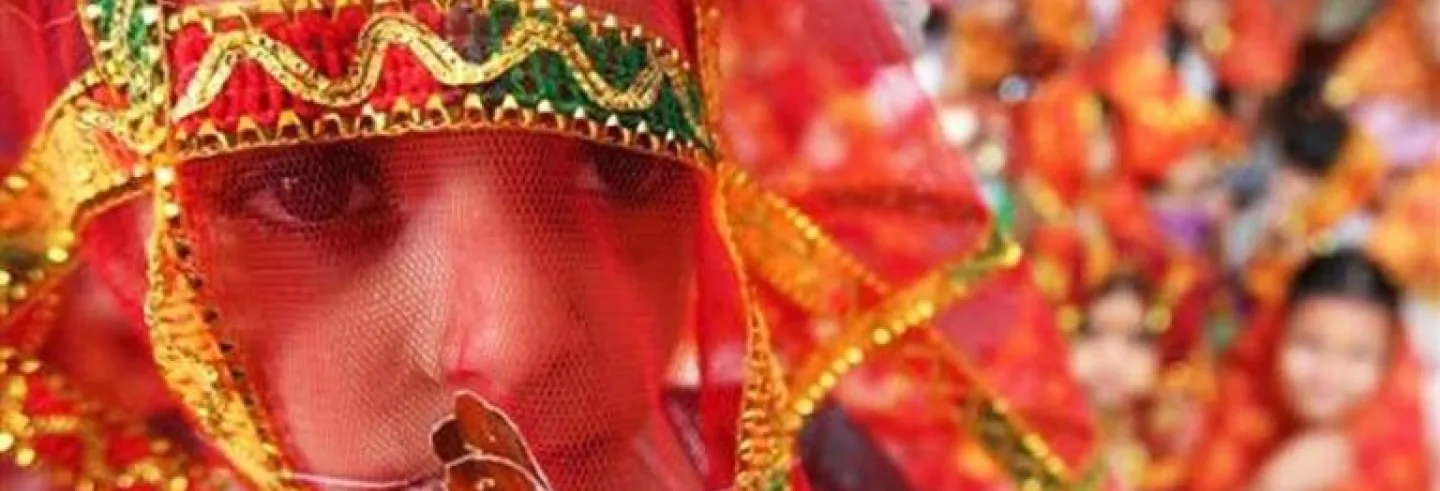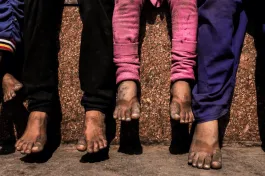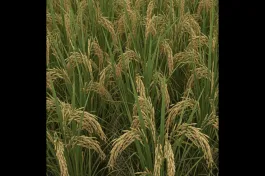The Covid-19 pandemic has disrupted life for all groups in society. While attention has been focused on the direct effects of Covid-19 on hospitalisation and deaths, the ways in which it has affected the young has received less attention. Indeed, the young have been thus far less affected by the virus than older age groups.
But the pandemic has affected the young indirectly and it is these indirect consequences that pose a severe threat to the future of the generation, especially for the most vulnerable among them. The consequences are evident in most spheres of their lives, and are even more severe for girls and young women than for boys and young men. Many young people have been left out of the shift to online education because of limited connectivity and access to devices. Girls have fared far worse than boys. Post-Covid-19 unemployment rates are higher among the young than older populations, and among women than men. Also documented are increased experience of violence, increased symptoms of mental ill-health, and limited access to health services including those that the young are most in need of: menstrual health supplies, contraceptives, pregnancy-related and other reproductive care, and mental health counselling.
Perhaps the least documented consequence of the Covid-19 pandemic and related lockdowns in India is a spurt in child and early marriage. Drawing from available insights — from research in previous humanitarian disasters and crises in India and elsewhere, as well as from reports of telephone and online surveys, and print and electronic media reports — I synthesise what is available and highlight the likely consequences for adolescents and youth in India.
Global estimates and implications for India
Estimates from the UN child agency UNICEF suggest that while 110 million child marriages took place globally and an estimated 25 million were averted over the decade 2011–2020, this trend may now be reversed. UNICEF now projects that up to 10 million more girls are at risk of child marriage in the decade 2021–2030 (UNICEF 2021). In contrast, the United Nations Population Fund (UNFPA) estimates that the Covid-19 pandemic will globally result in 13 million additional child marriages over the 2020-2030 decade. Of these, 7.4 million are attributable to the slowdown in programme implementation, and the remaining 5.6 million to the worldwide economic downturn through its effect on household poverty (UNFPA 2020).
Perhaps the least documented consequence of the Covid-19 pandemic and related lockdowns in India is a spurt in child and early marriage.
Given that every third child marriage takes place in India, the implications of these estimates for India are severe. During this century, India had made huge advances in reducing child marriage. In 2006–07 almost half (47%) of females aged 20–24 in India had married as children, that is, below the age of 18, the legal minimum. Over the next decade, child marriage had fallen impressively, with this number reaching 27% by 2015–16 IIPS (International Institute for Population Sciences) and ICF 2017; IIPS and Macro International 2007). Estimates suggest that these advances may be stalled over the next decade.
What we know from previous humanitarian disaster situations
A spike in child marriage in humanitarian disaster situations has been observed in many settings, for example, among Rohingya refugees in Bangladesh (Leigh et al. 2020), Syrian refugees (UNFPA 2017; CARE 2015), and those in conflict-affected areas such as South Sudan and Yemen. A survey among Syrian refugees found that more than one third of those aged 20–24 had married before age 18, estimating that child marriage rates were four times higher among refugees than among Syrians before the crisis (UNFPA 2020). Research in South Sudan and Yemen found that 71% and 65%, respectively, of girls were married in childhood, compared to 45–50% prior to the conflict (Girls Not Brides 2020). Similar effects on child marriage were evident during the Ebola outbreak in Liberia (Plan International 2014). In India, too, authors have noted that families affected by shocks and disasters — like in flood and disaster prone areas or areas of communal tension — are more likely to marry their children young than others. Indeed, a review of the 2008 Kosi flood suggests a spike of 7% in child marriage for both females and males (Khanna and Kochhar 2020).
What we know about Covid effects on child marriage
A recent report has estimated that the large burden of these child marriages will take place in South Asia: 191,200 in a single year, and 956,000 in five years (Save the Children 2021). While sparse, more direct available evidence confirms such concerns.
In a phone survey of adolescents in four states (Bihar, Chhattisgarh, Jharkhand, and Odisha), 8% of adolescents reported familiarity with at least one incident of child marriage in their neighbourhood after the lockdown was imposed, and 2–3% reported that plans for their marriage had been initiated, and their chances of getting married early were exacerbated by the pandemic, more girls than boys so reported (Centre for Catalysing Change 2021). In a study of youth (66% female, 71% aged below 18) in Bihar, Rajasthan, and Uttar Pradesh, conducted in May 2020 (one month following the imposition of the national lockdown), while just 3% overall reported that their families were pressuring them to discontinue schooling in order to marry, this percentage was as high as 10% in Uttar Pradesh. Presumably these percentages would be higher if only girls were considered (Population Foundation of India 2020). Some 9% of youth serving organisations across India who participated in an online survey in August 2020 reported that over the previous five months (since the imposition of the lockdown) they had been alerted about a girl whose marriage was about to be performed (Dasra 2020). Likewise, the Aangan Trust reports that its programmes in Bihar, Jharkhand, Maharashtra, Rajasthan, and West Bengal were successful in preventing the child marriages of a total of 205 girls and 6 boys (Chakraborty and Vaidya 2021; Chakraborty 2021).
Evidence also comes from the data of Childline, a nodal government agency for children in distress that receives and addresses distress calls, including those related to child marriage. While these data represent just the tip of the iceberg, they clearly suggest a disturbing trend since the lockdown was imposed. During May–July 2020, for example, 5,584 distress calls were to address child marriage, representing a 33% increase in reports of child marriage to ChildLine between Jan-June 2019 and Jan-June 2020 (Times of India 2021; Bahl, Bassi and Arora 2021). Pandemic-related child marriage has been reported from states in several media articles (Table 1).
Time periods differ and comparative numbers from a previous period are not always available, and numbers likely touch no more than the surface, since many marriages were likely to have taken place surreptitiously or were not reported, as evident from the absence of information from high child marriage states such as Bihar, Rajasthan, Uttar Pradesh, and West Bengal. Even so, an escalation in child marriage was evident from the very early days of the lockdown. Notably, even Kerala and Tamil Nadu, states in which child marriage rates are relatively low, have been reporting them.

Factors affecting crisis-induced child marriage spikes
Evidence has reiterated the obvious: a crisis-exacerbated increase in household poverty together with uncertain employment opportunities is a key driver of child marriage. Indeed, UNFPA estimates of the increase in child marriage globally are attributed to a large extent to economic shocks and exacerbation of household poverty (UNFPA 2020). Child marriage as a strategy to address household poverty has been noted in India in general (Jejeebhoy 2019) as well as during the pandemic (Khanna and Kochhar 2020). A child bride’s narrated:
One fine day, my parents told me that I have to get married at the earliest, and that any further delay can force them into more debt […] My parents neither took my consent nor informed me, but just told me I had to get married. They said they want to reduce some burden as I have a younger sister (Teja 2021).
Smaller dowries are demanded for younger girls, and dowry of any amount may be welcome for boys. Marriage expenses can be minimised by marrying off all the daughters of the family together, in a single ceremony, irrespective of their age (Jejeebhoy 2019). The restrictions placed during the pandemic on the number of guests that may be invited to wedding functions makes child marriage all the more attractive as a cost-saving measure (Nandy 2021).
In the second wave, anecdotal reports do suggest that girls orphaned are being married off early.
The lockdown and closure of schools has meant more girls are out of the protective net of school, raising fears for their physical safety and concerns about threats to their sexual purity and, consequently, izzat, 'family honour'. Those whose schools provide on-line classes may not have the devices, the network access or the technological skills to access schooling, resulting in their greater risk of permanent school discontinuation. The positive association between school discontinuation/completion and marriage is well known, and many girls whose education is prematurely suspended will be forced to marry at an early age. As a 12-year old girl in Uttar Pradesh remarked “The more my family saw me around, the more they discussed my marriage prospects” (Yadav 2020).
While data are not available, parental death from Covid-19 may itself accelerate school discontinuation and premature marriage among girls whose extended families may themselves be struggling or unwilling to care for the girl. In the second wave, anecdotal reports do suggest that girls orphaned are being married off early.
Another likely factor underlying the spurt in child marriage may be the suspension of child marriage-related behaviour change programmes, and the absence of available support systems at the local level. UNFPA estimates have noted that the pause in programmes to end marriage that has been necessitated as a result of Covid-19 is likely to have a significant impact on stalling declines in child marriage globally (UNFPA, 2020). The diversion of frontline worker responsibilities to Covid-19-related care, the limited interaction between girls and teachers, and the isolation from potentially supportive peers has meant that those who seek intervention to delay or suspend their marriages are denied such support. Adolescent-serving organisations may themselves have limited their reach during the lockdown period. Few, moreover, know about, or have the privacy to contact helplines such as ChildLine (the nodal agency for India’s Ministry of Women and Child Development), and few have access to NGO support or have the means, privacy or confidence to seek help despite obstacles, as articulated by a girl in Uttar Pradesh whose engagement ceremony had been held:
“After the roka ceremony in August, I managed to sneak out of the house and called my teacher for help. I did not want to become a child bride” (Yadav 2020).
Those who approach a helpline or organisation often do it too late. As one adolescent-serving organisation noted, of all those whose marriages the organisation had been able to avert, almost two-thirds had approached the organisation early, at a time when talk of marriage had been initiated in the household but no further action had been taken, than at later stages when the marriage arrangements had been fixed (Chakraborty and Vaidya 2021). While rare, girls without access to timely support are observed to have suicidal thoughts or even attempt death by suicide (Nandy 2021).
[P]rint and electronic media reports … clearly show an increase in several states in complaints of child marriage reported to ChildLine.
Finally, data are sparse and likely capture no more than the tip of the iceberg. The phone and online surveys that have been conducted over the course of the pandemic have failed to capture marriage age, most are not designed to do so. ChildLine records valuable information about complaints registered, together with comparisons with previous years, but data are not easily accessible and many child marriages conducted surreptitiously or with the girl’s acquiescence, are missed. Nevertheless, the print and electronic media reports compiled in Table 1 clearly show an increase in several states in complaints of child marriage reported to ChildLine. Finally, political commitment to maintaining high quality and comparable data on the registration of child marriage complaints over time is missing.
Indeed, as recently as 12 March 2021, in response to a question in Parliament about whether there had been an increase in the number of complaints pertaining to child marriage during the Covid-19 pandemic in 2020, the minister for women and child development, avoided any mention of the data publicly available and reproduced in Table 1 (Thomas 2021).
What next?
Although young people represent the cohorts that will be instrumental in addressing the long-term economic and social consequences of the pandemic, their needs have not thus far been prioritised and even recognised in programmes. It is imperative that urgent programme efforts are made to ameliorate adverse effects on young people, including efforts to stop the escalation of child marriage of girls. A number of evidence-based leads for investment are available and may be adapted to confront the Covid-19 pandemic (Jejeebhoy 2019; Malhotra and Elnakib 2021).
For one, we have a duty to ensure that girls are able to continue their education during school closures and return to school when schools reopen. If online classes are not feasible, efforts must be made to distribute worksheets and written materials and provide individualised meetings by phone or in-person to resolve problems and help those lagging. Evidence has suggested that cash or in-kind transfers conditional on school attendance are a promising intervention for keeping girls in school, and thereby delaying child marriage. Several states, including Bihar and West Bengal, had established such programmes prior to the onset of the pandemic. These programmes must be maintained, adapted for the lockdown and post-pandemic circumstances, and expanded to other states. Supplementary coaching of adolescents found lagging is also a promising intervention.
Second, the tendency to turn to child marriage as a lever to cope with pandemic-related increases in household poverty must be reversed. Social protection and poverty alleviation measures have the potential to temper such reactions. At the same time, child marriage remains a norm in many settings, and much more investment is needed in sensitising parents — fathers in particular — and communities to reassess patriarchal norms, recognise the benefits of delayed marriage for girls’ lives, and better understand the risks they face in violating the Child Marriage Act. (It is not only parents, but others involved in the performance of the wedding — including the priest, the caterer, and even guests — who may be charged for abetting the wedding of a minor.)
[T]he tendency to turn to child marriage as a lever to cope with pandemic-related increases in household poverty must be reversed.
Mentors, both adult and peer, must be available for girls. Frontline health care providers, teachers, youth serving organisations and child protection officers must be charged with making home visits or individualised phone calls to better assess and act upon calls for help. Platforms exist, including counsellors serving Adolescent Friendly Health Clinics across the country, locally elected representatives (of panchayati raj institutions), village-level Child Protection Committees, for example. Youth champions must be identified and trained to serve as mentors playing the role of confidantes to girls fearing marriage as well as of intermediaries between girls and the system, as numerous youth serving organisations have demonstrated. Clues such as non-attendance in online classes must be probed and followed up. Just regular check in visits or phone calls may serve to protect girls from child marriage.
Finally, gender-disaggregated data on child marriages and other social outcomes are essential to assess pandemic-related effects. Frontline workers who already collect data on other health outcomes (pregnancy, contraception, etc), and teachers who are aware of and keep data on absenteeism and discontinuation are well-placed to probe and record child marriage, ensuring that deliberate attempts to obfuscate age information are minimised.
Conclusions
In short, the consequences of child marriage are huge, likely stalling if not overturning the progress made during the recent past, widening inequities between the rich and poor, and between boys and girls, and further compromising access to education and vocational skills, as well as agency and exercise of rights among girls and young women. India aims to achieve, by 2030, the Sustainable Development Goals, including SDG Target 5.3 to end child marriage. The Covid-19 pandemic will undermine progress made towards achieving this goal unless political commitment and broad-based strategies intended to reverse the stall are seriously undertaken.








